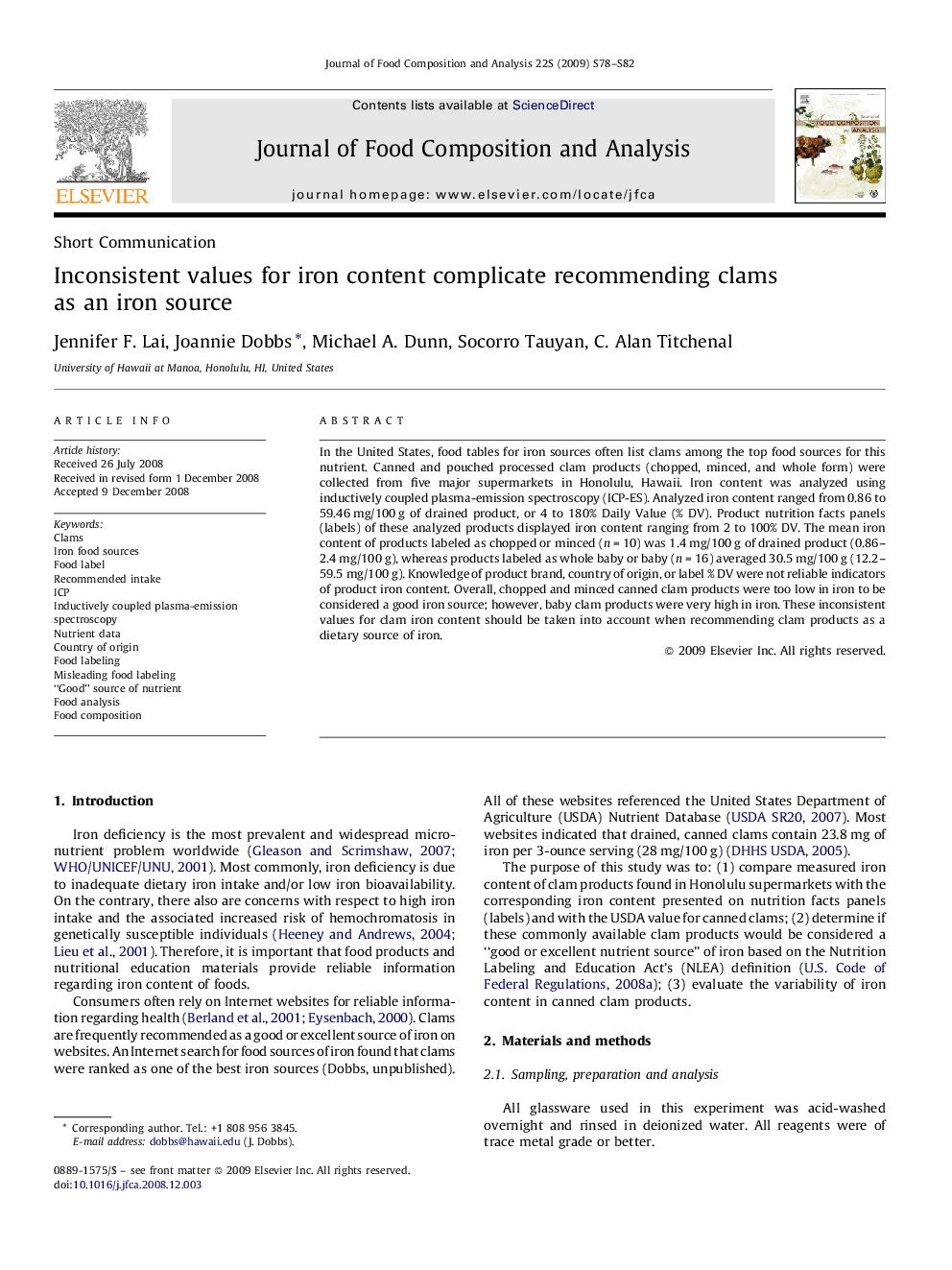| Article ID | Journal | Published Year | Pages | File Type |
|---|---|---|---|---|
| 1219023 | Journal of Food Composition and Analysis | 2009 | 5 Pages |
In the United States, food tables for iron sources often list clams among the top food sources for this nutrient. Canned and pouched processed clam products (chopped, minced, and whole form) were collected from five major supermarkets in Honolulu, Hawaii. Iron content was analyzed using inductively coupled plasma-emission spectroscopy (ICP-ES). Analyzed iron content ranged from 0.86 to 59.46 mg/100 g of drained product, or 4 to 180% Daily Value (% DV). Product nutrition facts panels (labels) of these analyzed products displayed iron content ranging from 2 to 100% DV. The mean iron content of products labeled as chopped or minced (n = 10) was 1.4 mg/100 g of drained product (0.86–2.4 mg/100 g), whereas products labeled as whole baby or baby (n = 16) averaged 30.5 mg/100 g (12.2–59.5 mg/100 g). Knowledge of product brand, country of origin, or label % DV were not reliable indicators of product iron content. Overall, chopped and minced canned clam products were too low in iron to be considered a good iron source; however, baby clam products were very high in iron. These inconsistent values for clam iron content should be taken into account when recommending clam products as a dietary source of iron.
